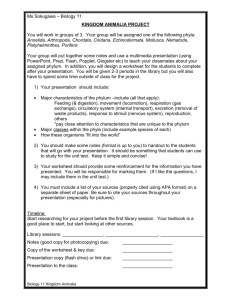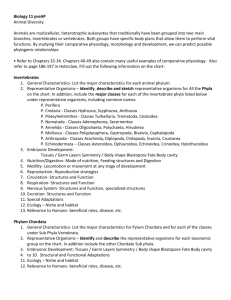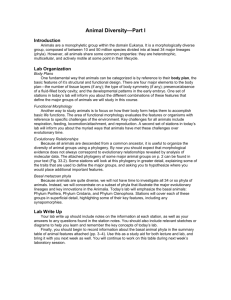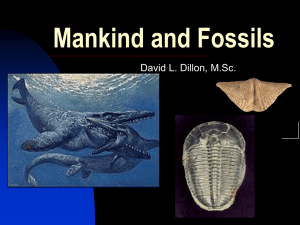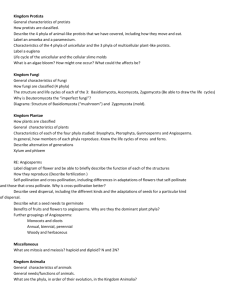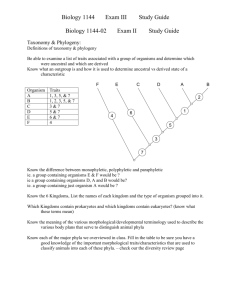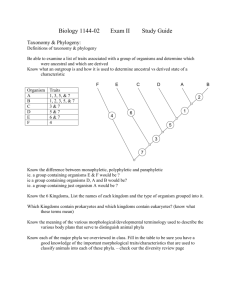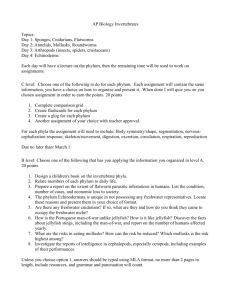Study Guide-Animal Assessment
advertisement
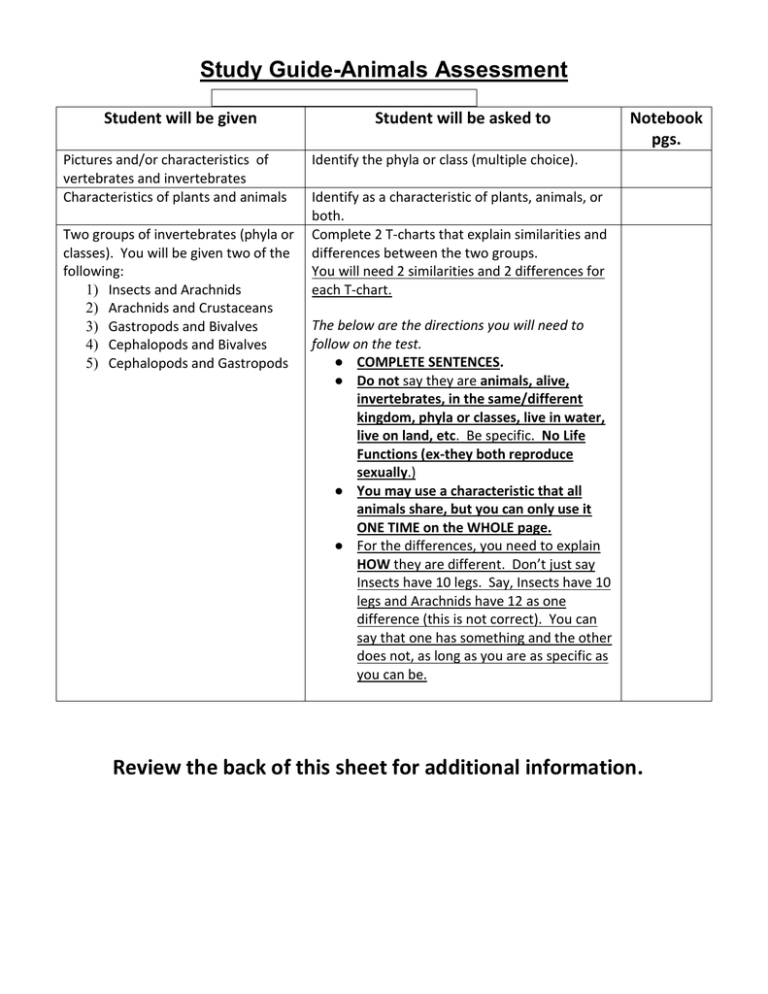
Study Guide-Animals Assessment Study Guide-Animal Student Assessment Student will be given will be asked to Pictures and/or characteristics of vertebrates and invertebrates Characteristics of plants and animals Two groups of invertebrates (phyla or classes). You will be given two of the following: 1) Insects and Arachnids 2) Arachnids and Crustaceans 3) Gastropods and Bivalves 4) Cephalopods and Bivalves 5) Cephalopods and Gastropods Notebook pgs. Identify the phyla or class (multiple choice). Identify as a characteristic of plants, animals, or both. Complete 2 T-charts that explain similarities and differences between the two groups. You will need 2 similarities and 2 differences for each T-chart. The below are the directions you will need to follow on the test. ● COMPLETE SENTENCES. ● Do not say they are animals, alive, invertebrates, in the same/different kingdom, phyla or classes, live in water, live on land, etc. Be specific. No Life Functions (ex-they both reproduce sexually.) ● You may use a characteristic that all animals share, but you can only use it ONE TIME on the WHOLE page. ● For the differences, you need to explain HOW they are different. Don’t just say Insects have 10 legs. Say, Insects have 10 legs and Arachnids have 12 as one difference (this is not correct). You can say that one has something and the other does not, as long as you are as specific as you can be. Review the back of this sheet for additional information. Below is a list of phyla and phyla/classes that you need to know for the assessment. 1) Phylum Annelida 2) Phylum Nematoda 3) Phylum Platyhelminthes 4) Phylum Arthropoda 5) Class Arachnida 6) Class Crustacea 7) Class Insecta 8) Phylum Mollusca 9) Class Bivalvia 10) Class Gastropoda 11) Class Cephalopoda 12) Phylum Echinodermata 13) Phylum Chordata 14) Class Aves 15) Class Amphibia 16) Class Mammalia 17) Class Reptilia 18) Fish Classes 19) Phylum Cnidaria 20) Phylum Porifera Other Words To Know: autotrophic,heterotrophic, multicellular and eukaryotic. Suggestions to prepare for assessment are: ● Make index cards. Make one for each of the number above. On one side of index card have phyla or phyla/class and on the other side have characteristics and examples. ● Make a picture study guide. Google pictures of members from each phyla or phyla/class and glue them onto paper. ● Make all FIVE T-charts on study guide. Study all five. ● Make an index card for animal characteristics and on other side discuss how each animal characteristic is similar to or different from plant characteristics learned.
